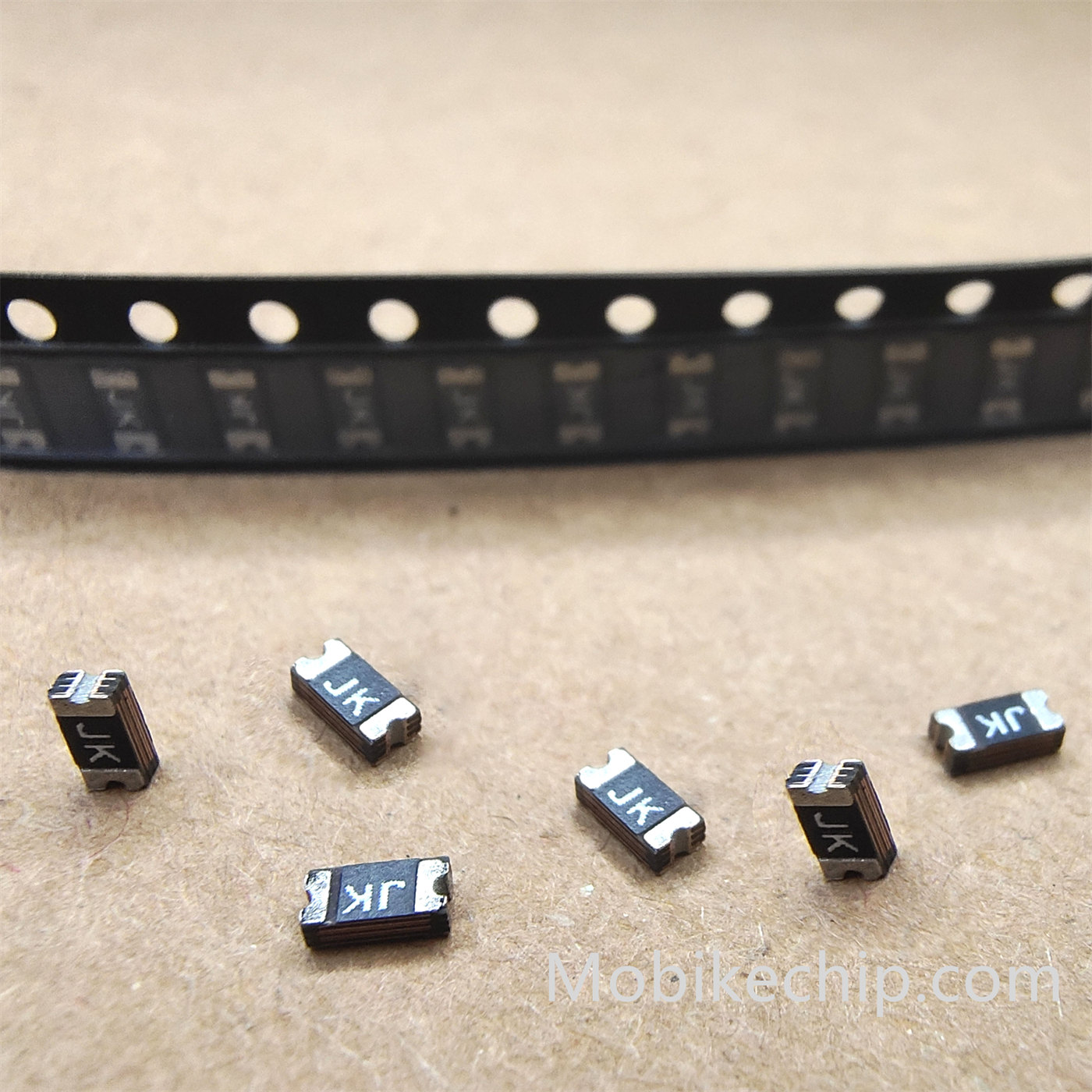What is SMD resistor? -Mobikechip
SMD resistors play an integral role in the family of electronic components. Whether it's for everyday smartphones and tablets, or complex industrial control systems and aerospace equipment, SMD resistors are indispensable. Today, let MobikeChip for your detailed explanation of what SMD resistors.
Definition and Basic Concept of SMD Resistors
SMD resistor is known as Surface Mount Device Resistor. Unlike traditional plug-in resistors, it is directly mounted on the surface of a printed circuit board (PCB) without the need for soldering through pins inserted into the board's through holes. This design has allowed SMD resistors to play a key role in the miniaturization of electronic products, enabling higher component densities and more complex circuit functionality in limited board space.
SMD resistors typically consist of a ceramic substrate, a resistive film, electrodes and a protective layer. The resistive film is the key part to determine the resistance value, and its material and manufacturing process will affect the performance parameters of the resistor, such as the precision of the resistance value, temperature coefficient, etc. The electrodes are used to connect the resistive film to the external circuit. The electrodes are used to connect the resistive film with the external circuit to ensure that the current can pass through the resistor stably. And the protective layer plays a role in protecting the resistive film and electrodes from the effects of the external environment, to improve the reliability and stability of the resistor.
SMD resistor features and advantages
(i) miniaturization and lightweight
Due to the use of surface mount technology, SMD resistors are significantly reduced in size compared to traditional plug-in resistors. For example, the common 0603 package SMD resistor, its size is only 1.6mm × 0.8mm, while the same resistance value of the plug-in resistor volume may be several times or even a dozen times larger. This allows electronic products to integrate more functional components in a smaller space, to meet the needs of modern electronic devices for thin and light portable, such as wearable devices, miniature sensors and other areas of the SMD resistor miniaturization is particularly dependent on the characteristics.
(ii) Excellent high-frequency performance
SMD resistors show good performance in high-frequency circuits. Their compact structure and short pin length reduce the effects of pin inductance and parasitic capacitance, enabling more efficient transmission of high-frequency signals and reducing signal distortion and attenuation. This makes SMD resistors widely used in communication equipment, RF circuits and other areas with demanding high-frequency performance, ensuring high-quality signal transmission and processing.
(iii) High production efficiency
SMD resistors are suitable for automated surface mount production lines for mass production. Mounter can quickly and accurately mount SMD resistors onto circuit boards, which greatly improves production efficiency and reduces production costs compared to the manual insertion or wave soldering process of traditional plug-in resistors. At the same time, the automated production process can also ensure product consistency and quality stability, improve the overall production quality and reliability of electronic products.
Third, the common application areas of SMD resistors
(i) consumer electronics
SMD resistors are ubiquitous in smart phones, tablet PCs, laptops, digital cameras and other consumer electronics. They are widely used in power management circuits, signal conditioning circuits, audio amplification circuits and other parts of the normal operation of the equipment to provide a stable resistance value, to ensure the realization of a variety of functions, such as screen display, sound output, battery charging and so on.
(ii) Automotive electronics
With the increasing degree of automotive electronics, SMD resistors also play an important role in the automotive electronic system. From the engine control system, body electronic stability system (ESP) to the car entertainment system, automotive lighting system, etc., all need a large number of SMD resistors to achieve precise circuit control and signal processing. They can work stably and reliably in complex automotive environments, such as high temperature, high humidity, strong electromagnetic interference and other conditions, to ensure the safety and comfort of the car.
(iii) Industrial control field
Industrial automation production lines, robots, power electronic equipment and other industrial control systems require high reliability and stability of electronic components. SMD resistors are widely used in various industrial control circuits for current limitation, voltage divider, signal sampling, etc., to ensure the precise control and efficient operation of industrial equipment, and provide powerful support for the automation and intelligentization of industrial production.
They are widely used in various industrial control circuits for current limiting, voltage dividing, signal sampling and other functions to ensure the precise control and efficient operation of industrial equipment, providing strong support for automation and intelligentization of industrial production.
At MobikeChip, we are committed to providing our customers with high quality SMD resistors and comprehensive technical support and solutions. Understanding the basic concepts, characteristics and applications of SMD resistors will help you better select and apply this key component in your electronic design and manufacturing process, optimize your circuit design and improve product performance. If you have any questions about SMD resistors or other electronic components, please feel free to visit MobikeChip's website, and we will be happy to serve you and explore the unlimited possibilities of the electronic world with you.


Comments
Post a Comment